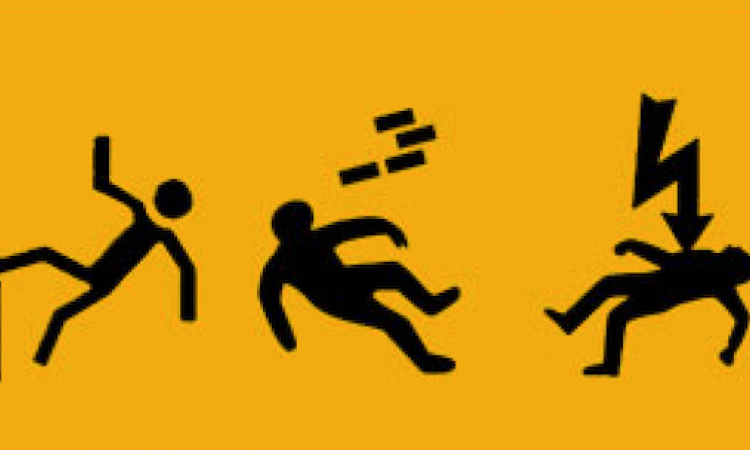3 Common Construction Equipment Jobsite Accidents and How to Prevent Them

It’s no secret that construction remains one of the top ten most dangerous jobs not only in the U.S. but all across the globe. A recent report states that each year thousands of injuries and triple-digit fatalities related to construction machine and equipment operation are realized.
Many of these accidents involve the operator, but more than half of them involved construction workers on the ground, including but not limited to laborers, spotters, superintendents, and even passersby. Ad basic physics to the dangerous equation and the injuries that can result from heavy equipment accidents are not quickly remedied by first-aid, but instead require a 911 call for an ambulance. Sometimes, a coroner must be called to a jobsite.
This is why it’s not only imperative that construction workers undergo extensive safety training courses, but it’s also the law. According to Forconstructionpros.com, a review by both OSHA and MSHA Fatality Alerts & Bulletins, reveal that almost all of these serious construction accidents are preventable. A safety-trained operator who is both cautious and constantly “safety aware,” even when performing seemingly routine duties, is what responsible every construction outfit desires.
In order to qualify as a construction machine and equipment operator, you must provide verifiable proof of training. Many equipment dealers often provide equipment safety training which is something construction businesses must take full advantage of, not only to avoid serious injury and death but also to avoid the hefty lawsuits that can accompany them. When the safety training has been completed, a Certificate of Completion will be issued to the trainee.
That said, what are the top 3 most common job site accidents?
- Getting On and Off Construction Equipment
The number one cause of serious injury to construction equipment operators is getting on and off their equipment. In order to avoid injury such as falls, you first need to make a check of your gloves and boots. They need to be clean of mud and grease. You should also invest in “high grip” gloves for secure handholds. If you don’t have any, your company should provide them for you.
When climbing onto a machine such as an excavator or a heavy-duty dump truck, you need to use a three-point stance to get on and getting off. It’s necessary to access the large hand and footholds by securely using the entire hand and foot. Do not use finger or toe holds. Also, try to avoid carrying objects while getting on or off. When coming down off a machine, never, ever jump.
- Loading and Unloading Equipment
All heavy construction equipment should be unloaded on level, solid ground. But even then, the risk of a machine roll-over is all too real. It’s important to make sure equipment is centered on its ramp and that the operator remains straight when maneuvering the equipment.
You should make sure there’s enough room to move the trailer and the equipment without running into an obstacle. This can be especially difficult on tight job sites such as those found in an urban environment like New York City, for instance.
An on-the-ground spotter must always be utilized for much-needed guidance. Also, make sure the machine clears the ramp before you make your turn. All workers must stay away from both sides of the machine while loading and unloading is underway.
Finally, the trailer deck must be checked for stability and clearance while the machine must be at “Zero Energy State” while it’s stowed. Proper tie-down procedures must be observed. If using compression chain binders, it’s necessary to practice caution when releasing the handle since the load can shift, and cause the handle to spring open.
- Too Many Curious People Crowding the Work Zone
Backhoe and excavator operators are always wary of too many people on the ground who are carelessly coming too close to the machine. Curious workers and even bystanders enjoy standing near a trench or a hole while the operator moves the dirt with his machine. In short, those workers and bystanders should not be there.
People must stay far enough away for a machine operating near them if they wish to avoid getting seriously injured or even killed when a swinging backhoe bucket happens to hit them in the head. You avoid this calamity by having regular safety meetings prior to beginning the workday and by placing construction barriers around the machine.
Operating heavy construction equipment can be one of the most exciting, satisfying, and well-paying jobs you can get. But it is also one of the most dangerous. It is imperative that you receive the necessary safety training prior to being hired by a reputable construction outfit. It’s not only the law, but your life and the lives of others just might depend on it.
